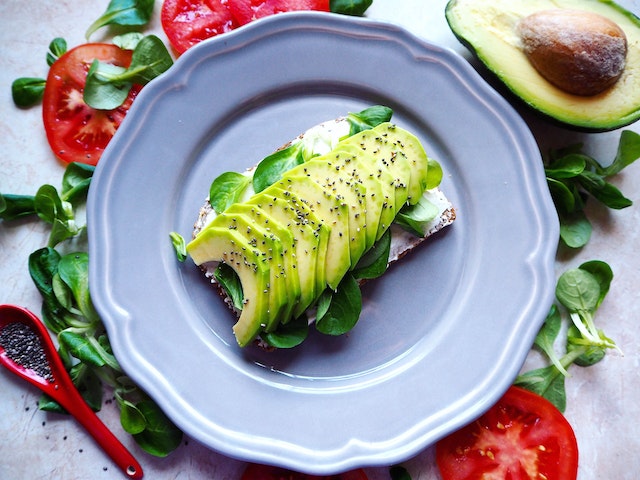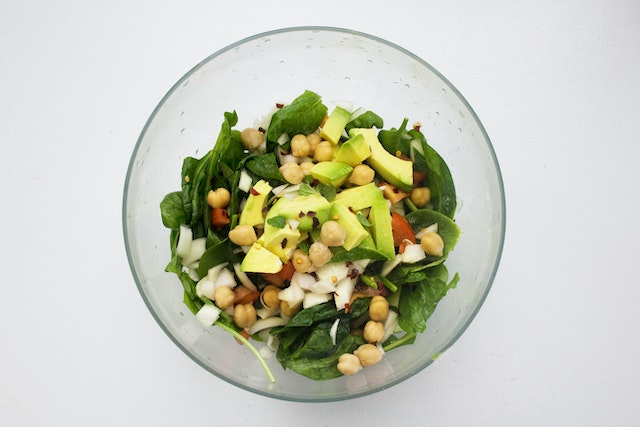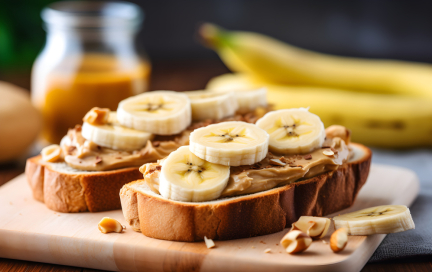{{ banner_block|raw }}
Before choosing a weight loss diet, it’s important to understand one key truth: how you eat affects everything — from your energy levels and metabolism to your ability to lose weight and feel your best.
Nutrition isn’t just about calories. It fuels your body, supports muscle and brain function, and plays a vital role in your long-term health. But with so many diet options out there — from keto and vegan to intermittent fasting — finding the right one for your body and lifestyle can be overwhelming.
In this guide, we’ll break down the most popular and science-backed diets for weight loss. You’ll learn how each one works, its pros and cons, and how to choose the approach that fits your goals, preferences, and habits.
Let’s dive in — and find a way to eat that supports your health without giving up the joy of food.
Quick Comparison: Popular Diets for Weight Loss
| Diet Type | Focus | Pros | Cons |
|---|---|---|---|
| Keto | High fat, low carb | Quick fat loss, appetite control | May cause nutrient deficiencies |
| Mediterranean | Whole foods, healthy fats | Heart health, sustainable | Slower results |
| Vegan | Plant-based only | Ethical, high fiber | Nutrient planning needed |
| Paleo | Whole, unprocessed foods | Protein-rich, no additives | Restrictive, expensive |
| GI Diet | Low glycemic index foods | Energy stability, satiety | Complex to track |
| Calorie Restriction | Lower daily intake | Simple, flexible | May cause hunger or rebound |
{{ post_14|raw }}
What is the keto Diet?
The keto diet, short for ketogenic, is one of the most popular low-carb diets. It’s gained widespread attention for helping people lose weight, improve blood sugar control, and boost energy levels.
The core idea? Shift your body into ketosis — a metabolic state where it burns fat (ketones) instead of glucose (carbohydrates) for energy. To do this, you dramatically reduce your carb intake and increase your consumption of healthy fats, with a moderate amount of protein.
By cutting out most carbs — like bread, pasta, and sugar — and focusing on foods like avocados, nuts, eggs, and meat, many people experience reduced cravings, more stable energy, and fewer blood sugar spikes.
This approach may help with fat loss, appetite control, and even certain heart health markers. However, it’s not without risks. The keto diet can lead to nutrient deficiencies, dehydration, and short-term side effects like headaches or fatigue — especially during the first week (often called the "keto flu").

Key principles of the keto diet
To follow a ketogenic diet effectively, it’s important to understand the basic macronutrient breakdown and food guidelines:
High fat (70–80% of daily calories)
Focus on healthy fats like avocados, olive oil, nuts, seeds, and coconut oil. These become your body’s primary fuel source.Moderate protein (15–20%)
Include quality protein sources such as eggs, fish, poultry, and dairy. Too much protein can interfere with ketosis, so moderation is key.Very low carbohydrates (5–10%)
Carbs are limited to 20–50 grams per day, mostly from non-starchy vegetables like leafy greens, cauliflower, broccoli, mushrooms, and zucchini. Sugars, grains, bread, and pasta are typically avoided.Calorie awareness
While keto may reduce appetite naturally, it’s still important to be mindful of your total calorie intake. A calorie surplus can still stall weight loss — even on keto.
Benefits of the keto diet
Supports fat loss
By shifting the body into ketosis, the keto diet may increase fat-burning and reduce overall hunger, leading to weight loss.May improve heart health
Some research shows that keto can reduce triglycerides and increase HDL (“good”) cholesterol, both important markers of cardiovascular health.Blood sugar and insulin regulation
The keto diet may be especially beneficial for people with type 2 diabetes or prediabetes by helping stabilize blood sugar and reduce insulin spikes.
Potential drawbacks of the keto diet
Nutrient deficiencies
Because it limits fruits, whole grains, and some vegetables, keto can result in lower intake of key vitamins and minerals like vitamin C, potassium, and fiber.Dehydration and electrolyte imbalance
Cutting carbs causes glycogen and water loss, and lower insulin levels prompt your kidneys to flush sodium. This can lead to fatigue, dizziness, and muscle cramps if electrolytes aren’t replenished.Keto flu and other side effects
During the first week, some people experience “keto flu” — temporary symptoms like headaches, nausea, irritability, and low energy as the body adapts to ketosis.Highly restrictive
Keto eliminates many common comfort foods (bread, pasta, rice, sweets), which can make the diet hard to sustain for some people over the long term.
Some science-backed facts about the Keto diet
Blood Sugar Study: A study published in the journal Diabetes Therapy found that the keto diet may help control blood sugar levels in patients with type 2 diabetes.
Heart Health Study: Another study published in the Annals of Internal Medicine found that the keto diet may improve blood lipid profiles and reduce the risk of cardiovascular disease.
So, the keto diet is an effective way to lose weight and improve health, but it is not suitable for everyone. Before starting such a diet, it is best to consult a doctor or nutritionist. Remember that a healthy diet should be balanced and meet the needs of your body
Vegan diet for weight loss: What to know
The vegan diet is a plant-based way of eating that eliminates all animal products — including meat, dairy, eggs, and even ingredients derived from animals, such as gelatin or whey. While many people adopt veganism for ethical or environmental reasons, it’s also a popular choice for those looking to lose weight and improve overall health.

Principles of a vegan diet
100% plant-based: A vegan diet includes fruits, vegetables, legumes, nuts, seeds, whole grains, and plant-based oils.
Excludes all animal products: No meat, fish, poultry, dairy, eggs, or animal-derived ingredients (like honey or casein).
Focus on whole foods: The healthiest vegan diets prioritize minimally processed foods that are naturally rich in nutrients.
Benefits of a vegan diet
Naturally lower in calories
Plant-based foods tend to be lower in calories and saturated fat, which can support a calorie deficit and aid in weight loss.High in fiber
Fiber from fruits, vegetables, beans, and whole grains helps you feel full longer, stabilizes blood sugar, and supports digestion.Rich in antioxidants
A wide variety of colorful plant foods provide antioxidants that fight inflammation and oxidative stress.Supports heart and metabolic health
Vegan diets have been linked to lower risks of heart disease, type 2 diabetes, and certain types of cancer.May improve energy and mood
Many people report feeling more energized and mentally clear when switching to a well-balanced vegan diet.
Looking for healthy recipes? Don’t miss our helpful collection — simple, tasty, and good for you! 💚
Potential challenges of a vegan diet
Risk of nutrient deficiencies
Without proper planning, vegans may fall short on vitamin B12, iron, calcium, omega-3s, and high-quality protein. Supplementation and fortified foods are often necessary.Eating out can be tricky
While more restaurants now offer plant-based options, social events or travel can make sticking to a vegan plan more difficult. Having snacks or calling ahead can help.Requires nutritional knowledge
Success on a vegan diet often depends on learning how to balance macronutrients, read ingredient labels, and ensure you’re getting all essential nutrients.
Make sure to include plant-based protein sources like tofu, tempeh, lentils, quinoa, and fortified dairy alternatives in your daily meals. And don’t forget a B12 supplement!
Is the Paleo diet good for weight loss?
The Paleo diet, often called the “ancestral-style eating,” is based on the idea of eating like our hunter-gatherer ancestors. It emphasizes whole, unprocessed foods and eliminates many modern staples like grains, dairy, and refined sugar.

Paleo diet principles
Focus on whole foods
Eat foods in their most natural state: lean meats, fish, eggs, vegetables, fruits, nuts, and seeds.Eliminate processed items
No refined sugars, artificial additives, fast food, soda, or packaged snacks.Avoid grains and dairy
The Paleo diet excludes wheat, rice, oats, corn, and all dairy products — including milk, cheese, and yogurt.Healthy fats only
Emphasize healthy fats from sources like olive oil, avocados, nuts, and fatty fish.>No legumes
Beans, lentils, peanuts, and soy products are not allowed, as they were not part of the pre-agricultural diet.
Pros of the Paleo diet
Supports weight loss
Cutting out high-carb and processed foods often leads to a calorie deficit and fat loss — without counting calories.Improved energy and mental clarity
Many people report more stable energy levels and reduced brain fog.Clearer skin and better digestion
Removing sugar and processed foods may reduce acne, bloating, and gut inflammation.Fewer cravings
High-protein, high-fiber meals help regulate blood sugar and keep you full longer.
Potential drawbacks of the Paleo diet
May lack key nutrients
Eliminating dairy and grains can reduce your intake of calcium, fiber, and certain B vitamins.Difficult to maintain
Avoiding common foods like bread, pasta, and yogurt can feel restrictive — especially when dining out or traveling.Expensive
Grass-fed meats, wild-caught fish, and organic produce can increase your grocery bill.
To make Paleo more sustainable, try the “80/20 rule”: follow the diet strictly 80% of the time while allowing occasional flexibility for social events or favorite foods.
{{ post_1|raw }}
Calorie restriction and intermittent fasting: A guide
A calorie-restricted diet is one of the most common and scientifically supported ways to lose weight. The idea is simple: consume fewer calories than your body burns, prompting it to use stored fat for energy.

How calorie restriction works
Eat less than you burn: Your body taps into fat stores when it doesn’t get enough calories from food.
Track or adjust portions: Some people use apps to track every calorie; others prefer to reduce portion sizes or eat lower-calorie foods.
No food off-limits: You can technically eat anything — as long as you're within your daily calorie goal.
Intermittent fasting: A popular twist
Intermittent fasting (IF) is a structured form of calorie restriction. Instead of counting calories, you limit when you eat, which can naturally reduce intake.
Common intermittent fasting methods:
16/8 Method: Fast for 16 hours and eat during an 8-hour window (e.g., 12–8 PM).
5:2 Diet: Eat normally 5 days a week and cut calories to 500–600 on 2 non-consecutive days.
During fasting, drink water, black coffee, or unsweetened tea. During eating periods, focus on balanced, nutrient-dense meals.
Benefits of calorie restriction (and intermittent fasting)
Weight loss & belly fat reduction
By lowering calorie intake or shortening eating windows, your body begins to burn fat more efficiently.Menu flexibility
You’re not tied to a strict food list — just a calorie range. This means you can still enjoy your favorite meals in moderation.Healthier eating habits
Most people become more mindful of what they eat, choosing nutrient-rich, lower-calorie options.Possible metabolic benefits
IF may support blood sugar regulation, reduce inflammation, and promote autophagy — a cellular process that helps clean out damaged cells.
Drawbacks to consider
Hunger & irritability
Reducing calories or skipping meals can lead to hunger, mood swings, or feeling deprived — especially in the beginning.Loss of muscle mass
If calories are too low and protein or strength training is neglected, you risk losing lean body mass along with fat.Hard to stick with long-term
Many people find it difficult to maintain calorie restriction or fasting over time, which can lead to yo-yo dieting or weight regain.Not for everyone
IF and strict calorie restriction may not be safe for those with eating disorders, certain medical conditions, or who are pregnant or breastfeeding.
Combine calorie awareness with strength training and adequate protein to preserve muscle mass while losing fat. And always check with a healthcare provider before starting a new eating pattern.
The glycemic index diet: Is it effective?
The Glycemic Index (GI) diet focuses on how the foods you eat affect your blood sugar. Instead of just tracking calories or carbs, this diet prioritizes low-GI foods that digest slowly — helping you feel full longer and avoid blood sugar spikes.

How the GI diet works
Low GI = Slower digestion & longer satiety
Foods with a low glycemic index (55 or less) are absorbed more gradually, helping to stabilize blood sugar and reduce hunger.High GI = Faster spikes & crashes
High-GI foods like white bread, soda, and sugary snacks digest quickly, causing blood sugar spikes that can lead to cravings and overeating.
Core principles of the GI diet
Choose Low-GI foods
Prioritize vegetables, legumes, whole grains (like barley or steel-cut oats), most fruits, nuts, and low-fat dairy.Limit High-GI foods
Cut back on white rice, white potatoes, pastries, sugary drinks, and heavily processed snacks.Eat smaller, balanced meals
Regular meals with a mix of fiber, protein, and healthy fats help maintain energy and prevent blood sugar crashes.
Benefits of the GI diet
Better appetite control
Low-GI foods digest more slowly, helping reduce hunger and the urge to snack between meals.Blood sugar regulation
Especially helpful for those with type 2 diabetes or insulin resistance.Steady weight loss
Promotes gradual, sustainable fat loss without the extreme restrictions of fad diets.
Drawbacks of the GI Diet
Can be complicated to follow
You may need to look up the GI of foods, which isn't always listed on packaging.May limit dietary variety
Avoiding certain carbs could restrict options, especially in social settings or restaurants.Individual results vary
Some people may not see dramatic weight loss compared to more aggressive approaches like keto or fasting.
Combine the GI diet with lean protein, healthy fats, and strength training to maximize results. Focus on whole foods, not just the GI number alone.
How the Mediterranean diet helps with weight loss
If you’re looking for a way to lose weight without giving up flavor, the Mediterranean diet might be your perfect match. Ranked consistently as one of the healthiest diets in the world, this eating pattern is inspired by the traditional lifestyles of people in countries like Greece, Italy, and Spain.
Unlike restrictive fad diets, the Mediterranean approach emphasizes whole, nutrient-rich foods and is praised not only for supporting weight loss, but also for its long-term health benefits — especially for heart health, metabolic wellness, and longevity.

Principles of the Mediterranean diet
The Mediterranean diet is more than just a way of eating — it's a lifestyle that promotes balance, variety, and enjoyment of food. Here’s what it looks like in practice:
Focus on plant-based foods
The foundation of every meal includes vegetables, fruits, whole grains, legumes, nuts, and seeds — all packed with fiber, vitamins, and antioxidants.Healthy fats over saturated fats
Olive oil is the primary fat source, replacing butter or margarine. It provides heart-healthy monounsaturated fats and anti-inflammatory compounds.Seafood over red meat
Fish and shellfish are favored 2–3 times per week. Red meat and poultry are eaten in moderation, if at all.Limited processed foods and added sugar
Highly processed snacks, sugary beverages, and packaged sweets are minimized.Moderate portions and calorie intake
The diet supports gradual, sustainable weight loss without strict calorie counting.Enjoyment and community
Meals are often shared with family and friends — encouraging mindful eating and long-term adherence.
Benefits of the Mediterranean diet
Heart health
Numerous studies show that the Mediterranean diet helps lower LDL ("bad") cholesterol, supports healthy blood pressure, and reduces the risk of cardiovascular disease.Weight management
The high fiber content and focus on whole foods promote satiety, making it easier to manage weight without deprivation.Anti-inflammatory and antioxidant-rich
A wide variety of colorful plant foods offer antioxidants that help combat chronic inflammation and oxidative stress.Lower risk of chronic diseases
Associated with reduced risk of type 2 diabetes, stroke, certain cancers, and cognitive decline.
Potential drawbacks of the Mediterranean diet
Cost and accessibility
Some staple ingredients — like high-quality olive oil, fresh seafood, or specialty cheeses — can be expensive or hard to find depending on your location.Slower weight loss results
This diet is designed for long-term health and gradual weight loss. It may not provide rapid results like low-carb or keto diets.
Keep it practical: frozen veggies, canned fish (like sardines or tuna in olive oil), and store-brand olive oil can make this diet more affordable and accessible.
Which diet is right for you?
There’s no one-size-fits-all approach to weight loss — and that’s a good thing. The best diet is the one that fits your goals, habits, and lifestyle. Here’s a quick guide to help you choose:
Looking for fast fat loss and appetite control? Try the keto diet — just make sure to stay on top of hydration and nutrients.
Prefer a natural, whole-food approach? The Paleo diet focuses on unprocessed meals and can help reduce cravings.
Interested in long-term health and balanced eating? The Mediterranean diet is sustainable, heart-healthy, and delicious.
Want to reduce your environmental impact and eat plant-based? A well-planned Vegan diet can be both ethical and effective.
Need flexibility and simplicity? Try Calorie Tracking or Intermittent Fasting — they can work with most eating styles.

















